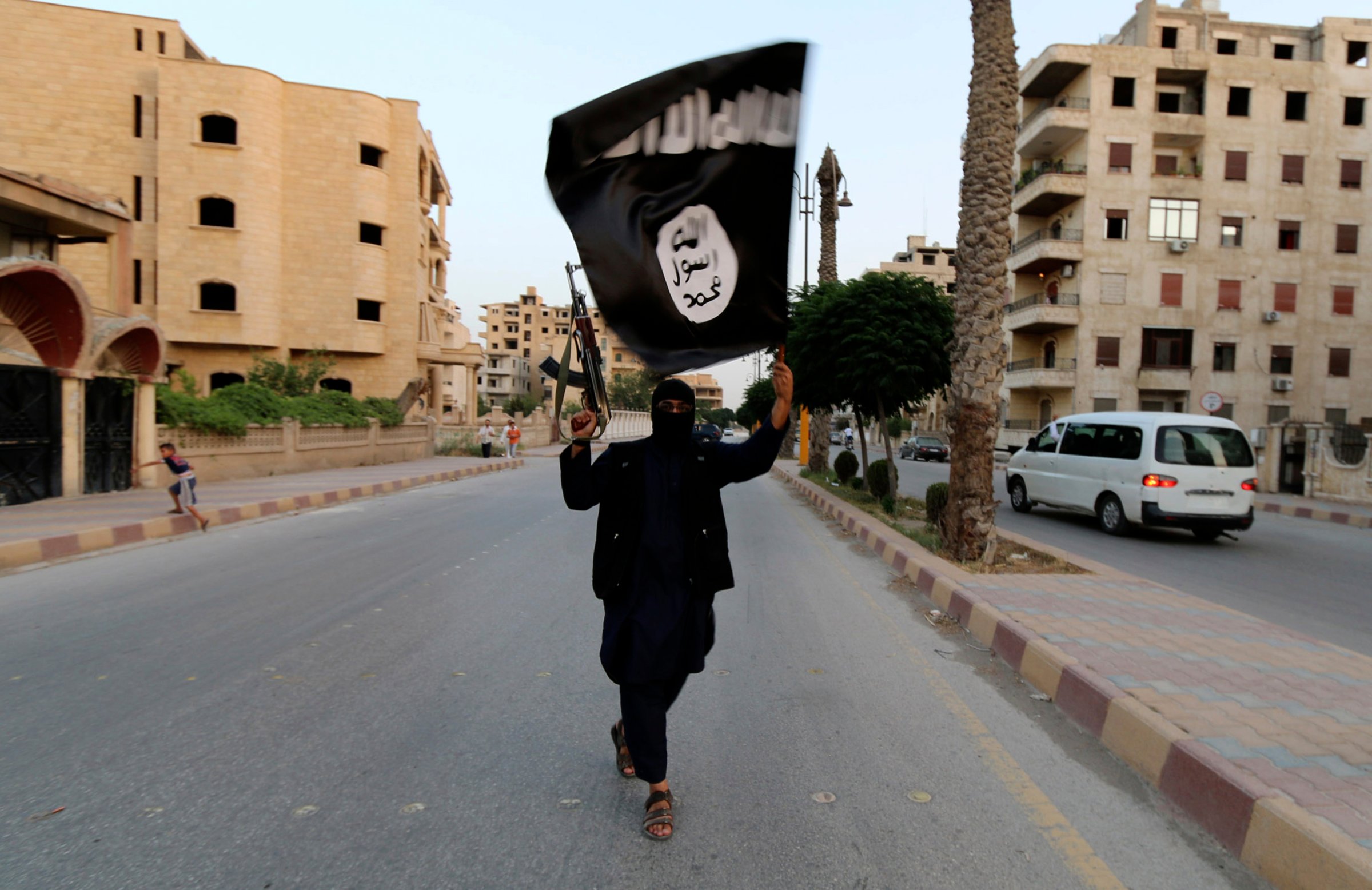
If you’re having a tough time figuring out how much of a threat the Islamic State of Iraq and Greater Syria (ISIS) poses to the U.S., you’re hardly alone.
“They marry ideology, a sophistication of strategic and tactical military prowess,” Defense Secretary Chuck Hagel said on Aug. 21. “They are tremendously well-funded. Oh, this is beyond anything that we’ve seen. So we must prepare for everything.”
Secretary of State John Kerry doesn’t seem to share the Pentagon chief’s foreboding, given how ISIS fighters scattered “the minute we hit them” as they tried to take the Kurdish city of Erbil in northern Iraq. “These guys are not 10 ft. tall. They’re not as disciplined as everybody thinks,” Kerry said on Sept. 5. “They’re not as organized as everybody thinks.”
So who’s right?
To be sure, nothing grabs attention like the barbaric series of videotaped ISIS beheadings of Westerners, which continued this weekend with the release of footage of the murder of British aid worker David Haines. Such horrors generate a visceral bloodlust, and they have achieved their goal: President Obama declared last week that the U.S. military and its allies are determined to destroy ISIS.
“We have countries in this [Middle East] region, countries outside of this region, in addition to the United States, all of whom are prepared to engage in military assistance, in actual strikes, if that is what is required,” Kerry said Sunday on CBS’s Face the Nation.
There’s a parallel to al-Qaeda here. Both Sunni groups leapt to prominence only after attacking the West with its own weapons. Al-Qaeda did it with airliners; ISIS has done it with the intrepid journalists and aid workers they captured and then murdered. Their chosen tools highlight how impotent they actually are.
That became even clearer last week when the Pentagon released its first comprehensive accounting of the ISIS targets it has hit in its month-long series of more than 150 air strikes.
The single largest category — 88 of 212 individual targets, or 42% — is “armed vehicles.” Not “armored vehicles,” like a tank or personnel carrier, but civilian pickups with machine guns mounted in the rear. A pair of tanks and assorted other armor accounts for a scant 7% of the targets.
Roughly 10% are antiaircraft artillery and locations described as “IED Emplacements, Mortar Positions, [and] Machine Gun Locations.” The “facilities” on Central Command’s hit list include “Fighting Positions, Checkpoints [and] Observation Posts.”
This is not an arsenal, but a ragtag collection, including gear the U.S. supplied to the Iraqi army, which ISIS seized after driving Iraqi forces from Mosul (the U.S. has attacked 37 ISIS Humvees built in Mishawaka, Ind.).
Of course, foes don’t need huge and costly weapons to be effective. The 9/11 hijackers murdered over 3,000 armed with nothing more than $2 box cutters. But they did that by exploiting yawning vulnerabilities in commercial-aviation security. The terrorists’ caginess must be trumped by wily thinking by the U.S. and its allies, a strategy in which air strikes can only play a supporting role.
Paltry gear shouldn’t been viewed as evidence of ISIS’ inherent weakness. It is waging war on a far broader battlefield than that being attacked by U.S. warplanes. That means it cannot be defeated by military means alone. Until the underlying causes for ISIS’s rise — the anti-Sunni governments in Iraq and Syria chief among them — are dealt with, ISIS will pose a real threat to the civilized world.
But it’s also important to realize that ISIS has succeeded only where it has been unopposed. Its proclaimed state is in the middle of one of the world’s most-heavily-armed regions, and it has shown little ability or desire to challenge a motivated military force.
They say nature abhors a vacuum. So do terrorists, judging by the CIA’s assessment Thursday that ISIS has grown from 10,000 to as many as 31,500 fighters over the summer, owing in no small part to its military success. They’re eager to plant their black flags in ungoverned terrain. That the West permitted such a fertile field in which ISIS could take root — in fact, all but plowed and sowed it — is the real harvest of the Iraq War.
More Must-Reads from TIME
- Why Biden Dropped Out
- Ukraine’s Plan to Survive Trump
- The Rise of a New Kind of Parenting Guru
- The Chaos and Commotion of the RNC in Photos
- Why We All Have a Stake in Twisters’ Success
- 8 Eating Habits That Actually Improve Your Sleep
- Welcome to the Noah Lyles Olympics
- Get Our Paris Olympics Newsletter in Your Inbox
Contact us at letters@time.com